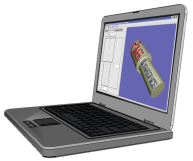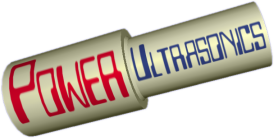Thermosets vs thermoplastics
Ultrasonic welding depends on the materials softening (but generally not melting) with increased temperature. Therefore it is suitable only for thermoplastic polymers, not thermosets.
Amorphous vs crystalline
Most thermoplastic polymers have a generally amorphous structure with some degree of crystallinity - that is in small regions of the material the chain molecules are aligned in an orderly fashion like a crystal. In the ultrasonic welding process crystallinity is a disadvantage for 2 reasons:
- Crystalline materials tend to absorb vibration energy before it can be passed through to the welding zone. This means more power is needed to weld them, with far-field welding being a particular problem.
- Amorphous materials melt gradually over a range of temperature, whereas crystalline materials have a sharper melting temperature. This makes it harder to achieve a good quality weld without damaging the components.
ABS, Acrylic, Polycarbonate and PVC are amorphous polymers - with little or no crystalline structure, they are ideal for ultrasonic welding. Polyethelene, Polypropylene, Polyester and Nylon are semi-crystalline - much more difficult to weld with ultrasonics.
Reinforcing and filling materials and additives
Different fillers and additives affect the welding process either positively or negatively. There may be advantages from increased component rigidity and melt viscosity (ie. the molten material is more viscous), for example using glass fibre fill. Alternatively reduced friction and lower melt viscosity will reduce the effectiveness of plastic welding, eg. when using lubricants or talc filler. One further consideration is the potential for abrasive fillers to rapidly wear out the sonotrode.
The range of possible fillers and additives is enormous - contact your material supplier to discuss the likely effects.
Welding dissimilar materials
In general best results are obtained when both components to be welded are made from identical material, but in some cases dissimilar materials can be welded using ultrasonics. For this to work the materials must be chemically compatible and have similar melting points (easier for amorphous materials - see discussion of amorphous and crystalline materials above). One of the best combinations is ABS - Acrylic (PMMA) though others are also possible to different degrees. Probably the most requested combination is Polyethelene - Polypropylene (PE to PP) but general wisdom seems to be that these are chemically incompatible.
Joining incompatible materials may still be possible using other techniques related to ultrasonic welding, such as staking or reforming. These processes soften and reshape only one of the components, trapping the other in place. Strong structural joints can be achieved in these processes but not a hermetic seal - for this you would need some supplementary seal (eg. gasket or o-ring).

